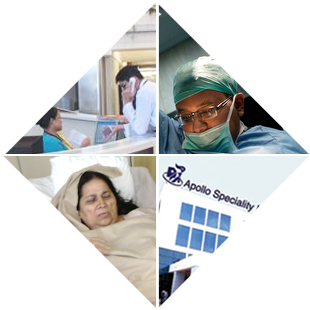
Cholecystectomy - Gall Bladder Removal
Introduction
Approximately 10-15 percent of the adult population or more
than 20 million people in the United States have gallstones.
About 1 million new patients are diagnosed annually.
Gallstones are more common in women, older patients, and
certain ethnic groups, and are associated with multiple
pregnancies, obesity, and rapid weight loss. In 1991
approximately 600,000 patients underwent cholecystectomy
(removal of the gallbladder).
Gallstones are composed principally of cholesterol. Stones
tend to grow for the first 2-3 years, at such point growth
tends to stabilize; 85 percent of all gallstones are less than
2 cm in diameter. Most patients with gallstones does not feel
any discomfort and remain symptom-free for many years and
many, in fact, never develop symptoms. However, the
consequences of gallstones may be severe, ranging from brief
episodes of biliary pain (misnamed "colic") to potentially
life-threatening complications, such as acute infections of
the gallbladder or pancreas, or rarely gallbladder cancer.
Until a decade ago, the prevailing surgical treatment of
symptomatic gallstones was an open operation through an
abdominal incision to remove the gallbladder.
Laparoscopic cholecystectomy is a minimally-invasive surgical
procedure that is performed using laparoscopic visualization
of the gallbladder and surrounding vital structures. This
technique requires that only a few small (about half-inch)
incisions be made in the abdominal wall. The gallbladder is
removed through one of the small incisions, the laparoscope
and instruments are removed, and the incisions are closed with
sutures and covered with small bandages. The operation usually
requires general anesthesia and is subject to the same risks
and complications as open cholecystectomy. However, patients
have little pain after the operation, and hospital stays (1-2
days) and recovery (1-2 weeks) are usually shorter than after
open cholecystectomy. It is estimated that more than 15,000
surgeons have received some training in the technique of
laparoscopic cholecystectomy, and demand for this form of
surgery has escalated to the point where probably about 80
percent of cholecystectomies are being performed through this
technique
Which Patients With Gallstones Should Be Treated?
Symptomatic Gallstones
Once gallstone symptoms appear, they recur in the majority of
patients. Furthermore, patients with symptoms secondary to
gallstones are more likely (25 percent within 10-20 years)
than asymptomatic patients to develop complications. Thus,
most symptomatic patients should be treated. Pain from
gallstones ('biliary pain') is often severe, episodic, lasting
1 to 5 hours, often waking the patient at night, and located
above the bellybutton ('epigastria') or in the right upper
quadrant of the abdomen. Biliary pain often flares soon after
eating. Nearly 90 percent of patients with typical biliary
pain are rendered symptom free after successful treatment of
their gallstones. Those who are too ill to undergo general
anesthesia should be managed with nonsurgical therapies.
Which Patients With Gallstones Should Be Treated With
Laparoscopic Cholecystectomy?
Since the advent of laparoscopic cholecystectomy in 1988, this
procedure has become the gold-standard for gallbladder
removal. Most patients with symptomatic gallstones are
candidates for laparoscopic cholecystectomy, if they are able
to tolerate general anesthesia and have no serious
cardiopulmonary diseases or other coexisting conditions that
preclude operation.
Some patients with very serious complications from gallbladder
disease may not be eligible for laparoscopic gallbladder
removal. In addition, patients in the third trimester of
pregnancy should not usually undergo laparoscopic
cholecystectomy, because of risk of damage to the uterus
during the procedure.
Laparoscopic cholecystectomy in the first trimester of
pregnancy remains controversial because of the unknown effects
of carbon dioxide on the developing fetus.

